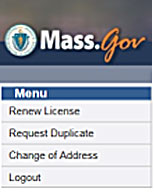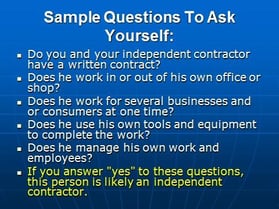
With the Remodeling marketplace booming this spring and predictions of close to a 10% increase in remodeling spending this year over last there will be plenty of work out there for remodeling contractors in 2016. With the surge in mind I have been coaching my contractor clients to be smart about how they do business. I have been stressing that they should take advantage of this surge by being selective about the customers they choose to work with and by raising their margins now before they get too booked up and regret becoming unavailable. If this makes sense to you and for your business read on to find out how to do fewer sales calls but at the same time close higher margin deals.
Agree on an agenda before committing to a sales call
Before you even commit to a sales call get your prospect’s commitment to discuss and commit to an agenda for the first sales call. Doing so can help you control the sales call as well as how your valuable and limited time will be invested.
The agenda should include the things they want to accomplish as well as the things you want to accomplish at that first meeting. If you can’t or won’t agree to what they want to accomplish, or they won’t agree to what you want to accomplish, then simply let them know you won’t be able to help them.
These three things should be part of your agenda
After you hear and approve of the items they want on the agenda ask permission to share the items you want on the agenda. You can include anything you want on your agenda but make sure at a minimum you get a commitment to discuss these three things before asking them if it still makes sense to invite you over:
Can we talk about why you want to do your project?
 You will need to know this info to create a unique solution and to have confidence in what you suggest to them when discussing options. You will also need to know this information to avoid becoming a commodity contractor by just giving them a price on what they thought they needed. You know, just like pretty much every commodity contractor does every day.
You will need to know this info to create a unique solution and to have confidence in what you suggest to them when discussing options. You will also need to know this information to avoid becoming a commodity contractor by just giving them a price on what they thought they needed. You know, just like pretty much every commodity contractor does every day.
Can we talk about your budget for this project?
Let them know you will either need to get a realist budget from them in order to help them, or that you can let them know what they should assume for a budget. But, be clear that a requirement of getting together will be to discuss and decide if there is a fit between their budget and the scope of work they would like completed.
Can we talk about how you plan to make your decisions?
 You need to get their commitment to discuss how they will decide about important project details as well as which contractor they will ultimately partner with. If you don’t know how they plan to make these decisions how can you possibly help them make decisions and why should you be surprised when they don’t or can’t decide?
You need to get their commitment to discuss how they will decide about important project details as well as which contractor they will ultimately partner with. If you don’t know how they plan to make these decisions how can you possibly help them make decisions and why should you be surprised when they don’t or can’t decide?
If they don’t know how they plan to make decisions think of it as your job to help them figure that out. That alone can help differentiate you from the commodity contractors.
Setting the agenda shows you’re serious and filters out the commodity buyers
Many of my consulting clients are now using what I call “the agenda step” as a way to prequalify who they are willing to visit. By creating this agenda they essentially give their prospects some homework to do to get ready for the visit. After my clients get good at setting the agenda they experience much better close ratios and they all report selling to much better customers. They also report most of these better customers are also willing to pay higher prices.
After setting the appointment several of my clients even send a follow-up appointment confirmation email documenting the agreed agenda.
One more thing to keep in mind
Good customers who are willing to have honest discussions and are willing to pay more for “different” hang around with other people just like them. After successfully putting the agenda step in place at your business, like my clients, you will probably get referrals to more good customers who will pay more for different.



 The bidding process is a big part of landing clients, and bid invitation apps like SmartBidNet are designed to make it easier for you to win projects. SmartBidNet provides a communications dashboard, where you can send, receive and monitor your invitations to bid. The app includes templates to help you:
The bidding process is a big part of landing clients, and bid invitation apps like SmartBidNet are designed to make it easier for you to win projects. SmartBidNet provides a communications dashboard, where you can send, receive and monitor your invitations to bid. The app includes templates to help you: Safety comes first on any project. From a technology standpoint, the Safety Meeting app makes it easier for contractors to comply with OSHA safety meeting regulations. Safety Meeting allows you to:
Safety comes first on any project. From a technology standpoint, the Safety Meeting app makes it easier for contractors to comply with OSHA safety meeting regulations. Safety Meeting allows you to: Bookkeeping is a necessary chore for any contractor, and accounting apps like QuickBooks Online take much of the labor out of bookkeeping by letting you automate the most repetitive and tedious bookkeeping tasks. Use your mobile device and let QuickBooks Online:
Bookkeeping is a necessary chore for any contractor, and accounting apps like QuickBooks Online take much of the labor out of bookkeeping by letting you automate the most repetitive and tedious bookkeeping tasks. Use your mobile device and let QuickBooks Online:
 Contact a lawyer. Do not attempt to engage the plaintiff on your own. Contact an attorney experienced in construction law. Your attorney will help you analyze and understand your risks. If the amount in controversy is small, your attorney can advise you on how to best represent yourself. After consulting an attorney, you will be able to make an informed decision about how to proceed with the lawsuit.
Contact a lawyer. Do not attempt to engage the plaintiff on your own. Contact an attorney experienced in construction law. Your attorney will help you analyze and understand your risks. If the amount in controversy is small, your attorney can advise you on how to best represent yourself. After consulting an attorney, you will be able to make an informed decision about how to proceed with the lawsuit. Guest Blogger: Renee Schwerdt, Esq., Owner/Attorney at Plumb & True Legal Consulting and Representation. Renee is an attorney and the owner of Plumb & True Legal, a law firm that serves contractors, architects, vendors and others in the construction industry. Her new blog, Level Up, is available
Guest Blogger: Renee Schwerdt, Esq., Owner/Attorney at Plumb & True Legal Consulting and Representation. Renee is an attorney and the owner of Plumb & True Legal, a law firm that serves contractors, architects, vendors and others in the construction industry. Her new blog, Level Up, is available  Mold remediation experts are not the only contractors who encounter mold on a fairly regular basis. Often times, the homeowner does not learn that there is mold in their house until a contractor points it out. This may be a restoration contractor, an HVAC contractor or even a plumbing contractor. Read on to find out how contractors can handle mold at their job sites and avoid liability.
Mold remediation experts are not the only contractors who encounter mold on a fairly regular basis. Often times, the homeowner does not learn that there is mold in their house until a contractor points it out. This may be a restoration contractor, an HVAC contractor or even a plumbing contractor. Read on to find out how contractors can handle mold at their job sites and avoid liability. Contractors are not advised to leave their career up to chance. Instead, contractors should consider investing in new insurance policies that are specifically designed to cover mold and pollutants. (As well as the standard GPL policy) Contractors Pollution Liability (CPL) covers liability for such pollutants with a clear definition that includes mold or fungi.
Contractors are not advised to leave their career up to chance. Instead, contractors should consider investing in new insurance policies that are specifically designed to cover mold and pollutants. (As well as the standard GPL policy) Contractors Pollution Liability (CPL) covers liability for such pollutants with a clear definition that includes mold or fungi.
 If you are Bechtel Construction, with more than $17 billion in operations, you need not worry about advertising under budgets in such a way that would prevent you from putting food on the table. After all, most in the construction industry, including designers and architects, are sole owners, with few if any employees. But for those of us who don't have a million-dollar advertising budget, we can turn to and rely on guerilla marketing and advertising to get our brand message out there.
If you are Bechtel Construction, with more than $17 billion in operations, you need not worry about advertising under budgets in such a way that would prevent you from putting food on the table. After all, most in the construction industry, including designers and architects, are sole owners, with few if any employees. But for those of us who don't have a million-dollar advertising budget, we can turn to and rely on guerilla marketing and advertising to get our brand message out there. Word of mouth is still one of the best marketing tools a business can utilize. In the world of social media, word of mouth is amplified by the power of the Internet.
Word of mouth is still one of the best marketing tools a business can utilize. In the world of social media, word of mouth is amplified by the power of the Internet. Now that you have an understanding of the components for guerilla marketing, it would suit you well to examine the strategies of some of the more successful companies.
Now that you have an understanding of the components for guerilla marketing, it would suit you well to examine the strategies of some of the more successful companies. The Joint Center for Housing Studies at Harvard University indicates that
The Joint Center for Housing Studies at Harvard University indicates that  So, here is my list of helpful articles for contractors seeking to advance and grow their production capabilities. The articles will help enlighten you to what your options are as well as several important considerations to be aware of before you jump in and get things started. I hope you find the info helpful and motivating.
So, here is my list of helpful articles for contractors seeking to advance and grow their production capabilities. The articles will help enlighten you to what your options are as well as several important considerations to be aware of before you jump in and get things started. I hope you find the info helpful and motivating. You can renew your MA CSL by mailing in your application or going in-person to renew it at the Department of Public Safety in Boston. One other option for renewing your MA CSL is to do it online. One great advantage of doing it online is that the process is instant and you don’t need to have already received your renewal application from the state to do it. I recently renewed my MA CSL License online. The experience was not all that difficult and it didn’t take too long to do it. Read on to find out how to do it and what you will need to have available before you start the process.
You can renew your MA CSL by mailing in your application or going in-person to renew it at the Department of Public Safety in Boston. One other option for renewing your MA CSL is to do it online. One great advantage of doing it online is that the process is instant and you don’t need to have already received your renewal application from the state to do it. I recently renewed my MA CSL License online. The experience was not all that difficult and it didn’t take too long to do it. Read on to find out how to do it and what you will need to have available before you start the process.


 The government has recently been cracking down on improper classification of workers as subcontractors. Understanding the difference, at least in the eyes of the government, can help a remodeler avoid challenges as well as the fines and penalties that come with misclassification. I recently became aware of an additional consideration as a result of reading an article in Remodeling magazine titled
The government has recently been cracking down on improper classification of workers as subcontractors. Understanding the difference, at least in the eyes of the government, can help a remodeler avoid challenges as well as the fines and penalties that come with misclassification. I recently became aware of an additional consideration as a result of reading an article in Remodeling magazine titled  When a customer experiences what Perry speaks to its not likely the contractor performing the work will ever get future business or referrals from the disappointed customer. Remember, quality is not just determined by the final outcome. Quality is also determined by the experience the consumer has as the product is being delivered.
When a customer experiences what Perry speaks to its not likely the contractor performing the work will ever get future business or referrals from the disappointed customer. Remember, quality is not just determined by the final outcome. Quality is also determined by the experience the consumer has as the product is being delivered.
 language of the subs you work with which details the scope of work they are to perform independently, you and or your business will be forced to orally direct the work of the subs. Once you do that the government no longer classifies them as subs, but rather as employees. That is therefore misclassification. According to an article at workcompcentral, in Tennessee a company by the name of Aguilar Carpentry was caught misclassifying workers and was fined $73,000. In another article posted to WTNH.com a CT contractor was fined $20,240 for misclassification. Those fine amounts would put most remodelers out of business.
language of the subs you work with which details the scope of work they are to perform independently, you and or your business will be forced to orally direct the work of the subs. Once you do that the government no longer classifies them as subs, but rather as employees. That is therefore misclassification. According to an article at workcompcentral, in Tennessee a company by the name of Aguilar Carpentry was caught misclassifying workers and was fined $73,000. In another article posted to WTNH.com a CT contractor was fined $20,240 for misclassification. Those fine amounts would put most remodelers out of business. OK, I’m sick and tired of the foo-foo fluffy BS answers some magazines and bloggers put out there to answer how contractors can raise their markup. All the BS answers I see offered by others never call these contractors out on their ignorance. Without knowing what markup they actually need to use how would a contractor who is “slowly raising” his markup know when he has finally hit the right markup? It drives me crazy! If you are ready for the no BS answers read on…
OK, I’m sick and tired of the foo-foo fluffy BS answers some magazines and bloggers put out there to answer how contractors can raise their markup. All the BS answers I see offered by others never call these contractors out on their ignorance. Without knowing what markup they actually need to use how would a contractor who is “slowly raising” his markup know when he has finally hit the right markup? It drives me crazy! If you are ready for the no BS answers read on…
 The majority of remodeling contractors who participate in the remodeling industry are holding the industry back from becoming much more professional and successful. Remodelers forever complain about what they perceive the government and even consumers do to them to make running a business and earning a profit difficult. However in many ways remodelers are their own worse enemies, creating problems for themselves and the industry by both their actions as well as their lack of action. Below are just five things I wish all remodelers and the industry would change, but won’t.
The majority of remodeling contractors who participate in the remodeling industry are holding the industry back from becoming much more professional and successful. Remodelers forever complain about what they perceive the government and even consumers do to them to make running a business and earning a profit difficult. However in many ways remodelers are their own worse enemies, creating problems for themselves and the industry by both their actions as well as their lack of action. Below are just five things I wish all remodelers and the industry would change, but won’t. 
 There are probably more than one million remodeling businesses in the United States if you include those without payroll. Sadly, I bet fewer than 20% operate completely legal. That’s probably why so many remodelers find some way to rationalize why they tolerate other illegal businesses; “People who live in glass houses shouldn’t throw stones”. Here is just a partial checklist you can use to self-assess: RRP, OSHA, permits, using 1099 workers, taking cash, proper licensing… Need I go on?
There are probably more than one million remodeling businesses in the United States if you include those without payroll. Sadly, I bet fewer than 20% operate completely legal. That’s probably why so many remodelers find some way to rationalize why they tolerate other illegal businesses; “People who live in glass houses shouldn’t throw stones”. Here is just a partial checklist you can use to self-assess: RRP, OSHA, permits, using 1099 workers, taking cash, proper licensing… Need I go on? 





